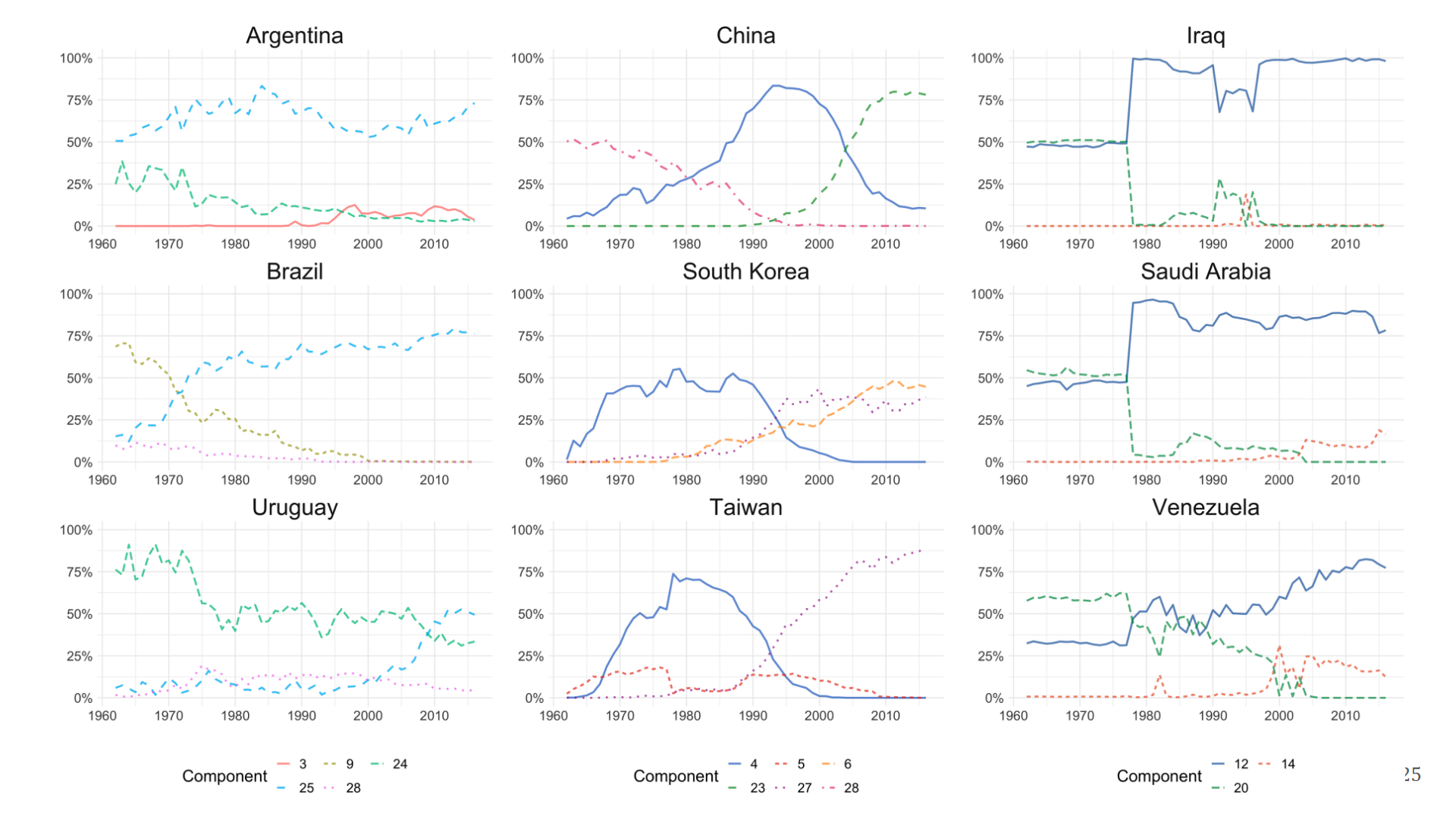4 de Febrero de 2021
Autores: VIKTORIYA SEMESHENKO - ANDREA MOLINARI
Analisis de comercio internacional usando procesamiento de datos, en colaboración con DIEGO KOZLOWSKI (https://sites.google.com/view/diego-kozlowski/home).
International trade is one of the classic areas of study in economics. Its empirical analysis is a complex problem, given the amount of products, countries and years. Nowadays, given the availability of data, the tools used for the analysis can be complemented and enriched with new methodologies and techniques that go beyond the traditional approach. This new possibility opens a research gap, as new, data-driven, ways of understanding international trade, can help our understanding of the underlying phenomena. The present paper shows the application of the Latent Dirichlet allocation model, a well known technique in the area of Natural Language Processing, to search for latent dimensions in the product space of international trade, and their distribution across countries over time. We apply this technique to a dataset of countries’ exports of goods from 1962 to 2016. The results show that this technique can encode the main specialisation patterns of international trade. On the country-level analysis, the findings show the changes in the specialisation patterns of countries over time. As traditional international trade analysis demands expert knowledge on a multiplicity of indicators, the possibility of encoding multiple known phenomena under a unique indicator is a powerful complement for traditional tools, as it allows top-down data-driven studies.
Cita: Kozlowski D, Semeshenko V, Molinari A (2021) Latent Dirichlet allocation model for world trade analysis. PLoS ONE 16(2): e0245393. DOI: https://doi.org/10.1371/journal.pone.0245393


